Because A Cat Out of Egypt begins in the midst of an ancient culture strange to many people, I have added a glossary that includes many words both strange and not so strange. I hope my explanations will make your reading of A Cat Out of Egypt more enjoyable! I haven’t included a guide to pronunciation, because from what I’ve seen, not even Egyptologists can agree among themselves as to how the long-dead ancient Egyptian language should be pronounced. Perhaps if I get spare week or two I may change my mind and burrow into the intimidating mass of opinion on the subject–but I make no promises.
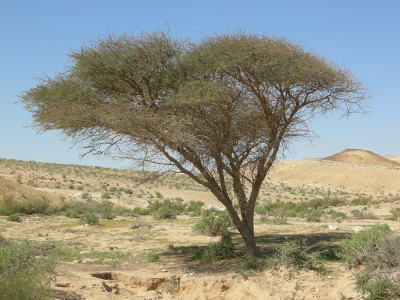 acacia tree – The acacia tree found in the Nile Valley and surrounding deserts is Acacia nilotica, or “thorn of the Nile.” A small tree or shrub, it thrives in dry, sandy areas. Its sweet-smelling yellow blossoms are used in the manufacture of perfumes, and its sap for a variety of medicines. Both leaves and pods are common animal fodder.
acacia tree – The acacia tree found in the Nile Valley and surrounding deserts is Acacia nilotica, or “thorn of the Nile.” A small tree or shrub, it thrives in dry, sandy areas. Its sweet-smelling yellow blossoms are used in the manufacture of perfumes, and its sap for a variety of medicines. Both leaves and pods are common animal fodder.
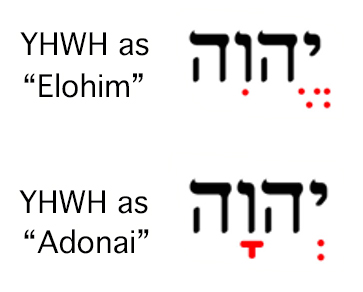 Adonai Elohim – Adonai Elohim is an ancient Hebrew term for God literally translated as “Lord God.” Adonai is generally translated as “lord,” or “master,” although it has ancient roots meaning “father” as well. Elohim is the plural form of the Hebrew word el, “god.” Interpreters disagree over why the word is plural. In addition to the phrase appearing on its own, either the word Adonai, or Elohim, or both, were spoken aloud instead of the actual name of God, YHWH. Originally written Hebrew had no vowels, only consonants. Later, when vowels were added to the text as tiny dots and lines, editors inserted the vowel points used in the words Adonai or Elohim wherever the name YHWH appeared, to remind readers never to speak the name of God aloud.
Adonai Elohim – Adonai Elohim is an ancient Hebrew term for God literally translated as “Lord God.” Adonai is generally translated as “lord,” or “master,” although it has ancient roots meaning “father” as well. Elohim is the plural form of the Hebrew word el, “god.” Interpreters disagree over why the word is plural. In addition to the phrase appearing on its own, either the word Adonai, or Elohim, or both, were spoken aloud instead of the actual name of God, YHWH. Originally written Hebrew had no vowels, only consonants. Later, when vowels were added to the text as tiny dots and lines, editors inserted the vowel points used in the words Adonai or Elohim wherever the name YHWH appeared, to remind readers never to speak the name of God aloud.
 al-‘Uzzah – Al-‘Uzzah was a goddess worshipped throughout pre-Islamic Arabia, along with the goddesses Allat and Manat. In Nabataea she appears to have been worshipped as the reigning goddess, along with their principal male god Dushara. As Greco-Roman culture gradually impacted Nabataea, al-‘Uzzah merged with Isis and Aphrodite/Venus. She was associated with both the morning and evening star.
al-‘Uzzah – Al-‘Uzzah was a goddess worshipped throughout pre-Islamic Arabia, along with the goddesses Allat and Manat. In Nabataea she appears to have been worshipped as the reigning goddess, along with their principal male god Dushara. As Greco-Roman culture gradually impacted Nabataea, al-‘Uzzah merged with Isis and Aphrodite/Venus. She was associated with both the morning and evening star.
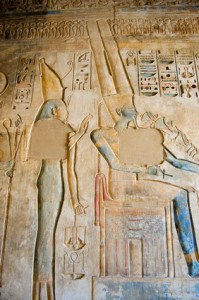 Amun – Amun was originally a local god of Thebes, who rose to the position of Egypt’s supreme deity as Amun-Ra for roughly 500 years, from 1600-1100 BCE, and then gradually declined in significance. In common with most Egyptian gods, he evolved over time, assimilating other gods and eventually being assimilated himself. At the height of his popularity he was considered to be the physical father of the pharaohs, who ruled Egypt in his name.
Amun – Amun was originally a local god of Thebes, who rose to the position of Egypt’s supreme deity as Amun-Ra for roughly 500 years, from 1600-1100 BCE, and then gradually declined in significance. In common with most Egyptian gods, he evolved over time, assimilating other gods and eventually being assimilated himself. At the height of his popularity he was considered to be the physical father of the pharaohs, who ruled Egypt in his name.
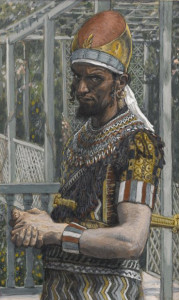
Antipas (Herod) – Herod Antipas (approximately 20 BCE – 39 CE) was Herod the Great’s youngest son, and tetrarch of Galilee and Perea after his father’s death. Like his father, Antipas was an ambitious builder. He rebuilt the Galilean capital of Sepphoris after its destruction in a Galilean uprising, and later built the city of Tiberius on the western shore of the Sea of Galilee as his capital. Soon after his father’s death, in an attempt to assure Rome of his peaceful intentions, Antipas married the daughter of the Nabataean king Aretas IV. He divorced her many years later in order to marry Herodias, his sister-in-law and niece. Antipas is best known today as the Herod who had John the Baptist killed and presided over part of Jesus’ trial. It was Antipas’ later marriage to Herodias (incest according to Jewish law) that angered John the Baptist. John’s vocal condemnations of Antipas’ behavior resulted in his arrest and death.
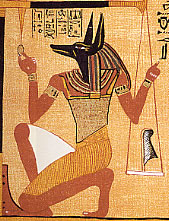 Anubis – Anubis was a god who protected the dead, oversaw the process of mummification, and guided the dead to the afterlife. He was commonly depicted as a jackal or a man with a jackal’s head. Once the supreme funerary god, Anubis was displaced by Osiris during the mid-2nd millennium BCE, although he continued in his role as guide and guardian of the dead. His scales weighed the hearts of the dead against the feather of Ma’at, or justice, to determine whether the soul would be admitted to the afterlife.
Anubis – Anubis was a god who protected the dead, oversaw the process of mummification, and guided the dead to the afterlife. He was commonly depicted as a jackal or a man with a jackal’s head. Once the supreme funerary god, Anubis was displaced by Osiris during the mid-2nd millennium BCE, although he continued in his role as guide and guardian of the dead. His scales weighed the hearts of the dead against the feather of Ma’at, or justice, to determine whether the soul would be admitted to the afterlife.
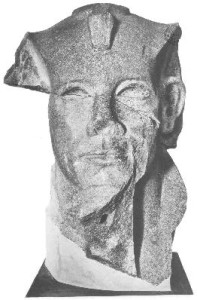 Apepi – Apepi was a Hyksos pharaoh who ruled northern Egypt at the end of the 2nd Intermediate Period, during the early 1500’s BCE. The excavations at Bubastis have revealed the presence of a pair of massive black granite statues from the Hyksos period that may be of Apepi (right) outside the entry pylons of the temple of Bast/Bastet.
Apepi – Apepi was a Hyksos pharaoh who ruled northern Egypt at the end of the 2nd Intermediate Period, during the early 1500’s BCE. The excavations at Bubastis have revealed the presence of a pair of massive black granite statues from the Hyksos period that may be of Apepi (right) outside the entry pylons of the temple of Bast/Bastet.
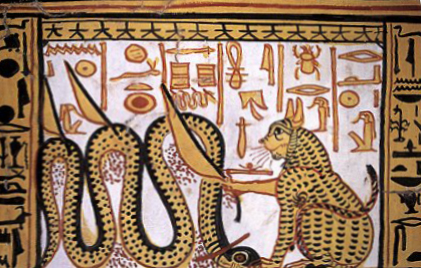 Apophis – Apophis (or Apep) was an ancient Egyptian demon of darkness and chaos who appeared in inscriptions as early as the 3rd millennium BCE. Usually he was portrayed as a snake, and was considered the greatest enemy of Ra, one of Egypt’s solar deities. The time of greatest risk in Ra’s daily journey was just before he rose each morning, when both he and his enemy were still beneath the horizon. One of the forms Ra took in his daily battle with Apophis was that of a large cat wielding a knife. Over time, as Bast/Bastet emerged as the daughter and eye of Ra, she became the one who fought and defeated Apophis each morning.
Apophis – Apophis (or Apep) was an ancient Egyptian demon of darkness and chaos who appeared in inscriptions as early as the 3rd millennium BCE. Usually he was portrayed as a snake, and was considered the greatest enemy of Ra, one of Egypt’s solar deities. The time of greatest risk in Ra’s daily journey was just before he rose each morning, when both he and his enemy were still beneath the horizon. One of the forms Ra took in his daily battle with Apophis was that of a large cat wielding a knife. Over time, as Bast/Bastet emerged as the daughter and eye of Ra, she became the one who fought and defeated Apophis each morning.
 Archelaus (Herod Archelaus) – Herod Archelaus (22 BCE – 18 CE) was the son of Herod the Great, who named him in his will as king over Judea, Samaria, and Idumea. Emperor Augustus refused to confirm Archelaus as king, naming him only ethnarch. Because of ongoing complaints by his brothers Antipas and Philip, and his brutality and unpopularity with his subjects, a Roman court removed him from power in 6 CE and exiled him to Gaul.
Archelaus (Herod Archelaus) – Herod Archelaus (22 BCE – 18 CE) was the son of Herod the Great, who named him in his will as king over Judea, Samaria, and Idumea. Emperor Augustus refused to confirm Archelaus as king, naming him only ethnarch. Because of ongoing complaints by his brothers Antipas and Philip, and his brutality and unpopularity with his subjects, a Roman court removed him from power in 6 CE and exiled him to Gaul.
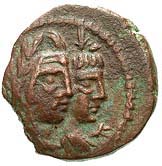
Aretas IV – Aretas IV, Philopatris (“Lover of his People”), was king of Nabataea from approximately 9 BCE to 40 CE. He had a typically stormy relationship with his Jewish neighbors to the north, primarily because of disputes over borders. The arranged marriage of his eldest daughter to Herod Antipas was probably a demonstration to the Romans of his peaceful intentions toward the Jews. His reign was one of the most prosperous in Nabataea’s history. Most of the ornate tombs and temples in Petra (then Rekem) date to the period of his ambitious building programs. When Antipas made plans to divorce Aretas’ daughter, she fled home to Nabataea, where simmering hostilities boiled over into open war somewhere around 36 CE. Aretas defeated Antipas’ troops, claiming much of Perea for his own, but Roman pressure forced him to withdraw. It may have been during this period, as Aretas was extending his borders northward, that he was mentioned in the New Testament book of II Corinthians as the king whose ethnarch attempted to arrest the Apostle Paul in Damascus.
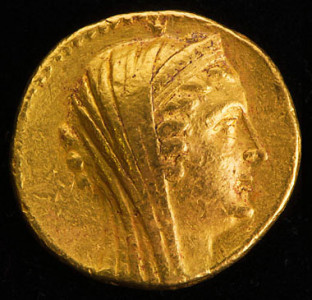 Arsinoe – Arsinoe was the port at the north end of the Red Sea, the last outpost before leaving central Egypt and entering the desert wilderness of Paran to the east, named after a Ptolemaic princess of Egypt (right).
Arsinoe – Arsinoe was the port at the north end of the Red Sea, the last outpost before leaving central Egypt and entering the desert wilderness of Paran to the east, named after a Ptolemaic princess of Egypt (right).
 Atum – Atum was a self-created deity, the first god to emerge from the chaos that preceded creation. The great temple at Heliopolis was dedicated primarily to him. Tikos’ description of his creation of the world is essentially correct.
Atum – Atum was a self-created deity, the first god to emerge from the chaos that preceded creation. The great temple at Heliopolis was dedicated primarily to him. Tikos’ description of his creation of the world is essentially correct.
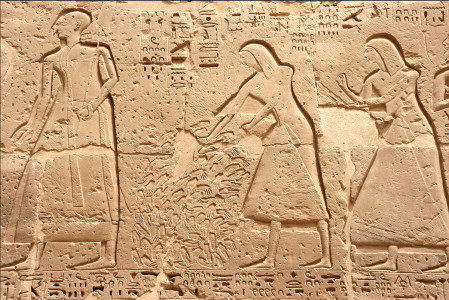
Avaris – Avaris was a capital of the Hyksos dynasties from approximately 1800 to 1550 BCE, and the site of the greatest temple to the god Set (Seth) in lower Egypt. The temple continued to flourish during the New Kingdom, but sometime around 1000 BCE, Set and his temple fell into disrepute. By the beginning of the Common Era it was mostly in ruins. Avaris is the only site where archaeologists have unearthed severed hands like those pictured in ancient reliefs.
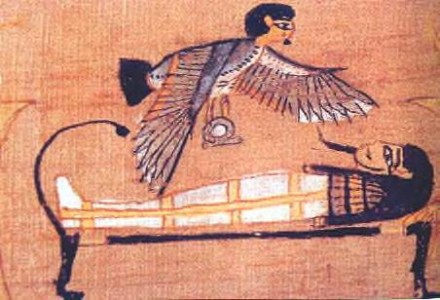 ba – The Egyptian ba is one of several distinct parts of a living (or dead) person. The ba has been compared to a person’s personality, or whatever is unique about that person. In humans, the ba took the form of a human-headed bird. In the case of gods, the ba was an alternate physical manifestation. So the Great Cat as the ba of Bast was an alternate manifestation of the goddess herself.
ba – The Egyptian ba is one of several distinct parts of a living (or dead) person. The ba has been compared to a person’s personality, or whatever is unique about that person. In humans, the ba took the form of a human-headed bird. In the case of gods, the ba was an alternate physical manifestation. So the Great Cat as the ba of Bast was an alternate manifestation of the goddess herself.

Babylon – In the 6th C BCE the Persians built the Babylon fortress on the eastern cliffs overlooking the Nile just north of Memphis. It marked the division between Middle Egypt (Asyut to Memphis) and Lower Egypt (the Delta), a point at which tolls were collected from boats traveling up and down the Nile. The Roman Emperor Trajan had the fort rebuilt closer to the river, but at the beginning of the Common Era the Romans were still using the cliff-top fort.
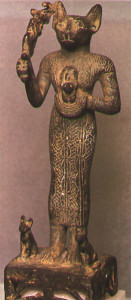 Bast/Bastet – Bast was a cat/lion goddess who served as protector and defender of the Pharaoh and later of the sun god Ra in the 3rd and 2nd millennia BCE. Eventually her role was subsumed by the goddess Sekhmet, also a warlike lion goddess. The changes in Bast’s significance, title, and even name were complex and confusing, morphing as dynasties changed and regional beliefs merged over time. Near the beginning of the first millennium BCE she became known by many as Bastet, and was increasingly identified with the Egyptian domestic cat. She retained her protective role, influenced by the domestic cat’s skill in dealing with snakes and rodents, and also became associated with fertility and motherhood. Bubastis , or Per-Bast, was established as the temple center of the cat goddess’s worship during the 2nd millennium BCE. The temple was famous for its beauty, although it was seriously damaged during the Persian conquest of Egypt in 525 BCE. Worship of Bast/Bastet was finally outlawed in 390 CE, after Christianity became the official religion of the Roman Empire.
Bast/Bastet – Bast was a cat/lion goddess who served as protector and defender of the Pharaoh and later of the sun god Ra in the 3rd and 2nd millennia BCE. Eventually her role was subsumed by the goddess Sekhmet, also a warlike lion goddess. The changes in Bast’s significance, title, and even name were complex and confusing, morphing as dynasties changed and regional beliefs merged over time. Near the beginning of the first millennium BCE she became known by many as Bastet, and was increasingly identified with the Egyptian domestic cat. She retained her protective role, influenced by the domestic cat’s skill in dealing with snakes and rodents, and also became associated with fertility and motherhood. Bubastis , or Per-Bast, was established as the temple center of the cat goddess’s worship during the 2nd millennium BCE. The temple was famous for its beauty, although it was seriously damaged during the Persian conquest of Egypt in 525 BCE. Worship of Bast/Bastet was finally outlawed in 390 CE, after Christianity became the official religion of the Roman Empire.
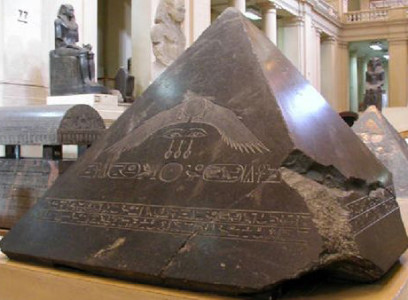 benben stone – In the temple of Atum at Heliopolis there was a courtyard where a high stone pillar stood, atop which was the magical benben stone, the Stone of Creation. Scholars believe it was a meteorite, possibly triangular in shape. Capstones of obelisks and pyramids (right) may have been modeled after it. The benu bird (similar to the Greek phoenix) landed on the benben stone whenever it was time for him to die and be reborn from his ashes. At some point before the Late Period began, the benben stone disappeared.
benben stone – In the temple of Atum at Heliopolis there was a courtyard where a high stone pillar stood, atop which was the magical benben stone, the Stone of Creation. Scholars believe it was a meteorite, possibly triangular in shape. Capstones of obelisks and pyramids (right) may have been modeled after it. The benu bird (similar to the Greek phoenix) landed on the benben stone whenever it was time for him to die and be reborn from his ashes. At some point before the Late Period began, the benben stone disappeared.
 benu bird – The legend of the benu bird is much as Tikos describes it, although it varies from text to text. The benu bird resembled a large wading bird.
benu bird – The legend of the benu bird is much as Tikos describes it, although it varies from text to text. The benu bird resembled a large wading bird.
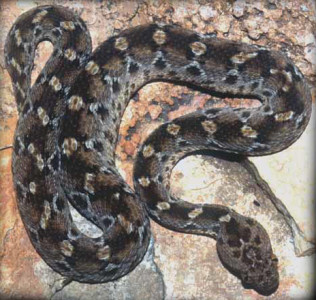 black viper – The black viper mentioned here is the Egyptian saw-scaled viper (Echis pyramidum), from 1 to 3 feet in length, indigenous to northern Africa and the Middle East. Saw-scaled vipers are nocturnal, emerging at twilight to hunt, and are irritable and quick to strike. Their venom is lethal.
black viper – The black viper mentioned here is the Egyptian saw-scaled viper (Echis pyramidum), from 1 to 3 feet in length, indigenous to northern Africa and the Middle East. Saw-scaled vipers are nocturnal, emerging at twilight to hunt, and are irritable and quick to strike. Their venom is lethal.
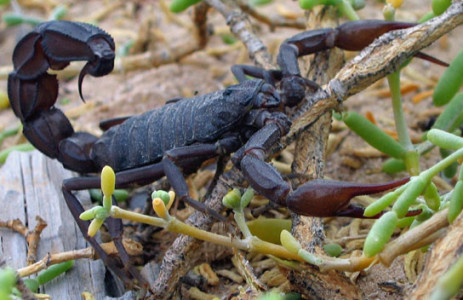 black scorpion – The black scorpion is the black fat-tailed scorpion (Androctonus bicolor), found throughout northern Africa and the Middle East as well as in other areas. Its lethal venom earned it the name “man-killer” (androctonus). Thick-bodied and from 2-3 inches in length, it is fast-moving and aggressive. Some victims die within an hour of being stung.
black scorpion – The black scorpion is the black fat-tailed scorpion (Androctonus bicolor), found throughout northern Africa and the Middle East as well as in other areas. Its lethal venom earned it the name “man-killer” (androctonus). Thick-bodied and from 2-3 inches in length, it is fast-moving and aggressive. Some victims die within an hour of being stung.
 brickyards – Government bureaucracies licensed and controlled the manufacture of bricks in Roman Egypt. People needing bricks had to travel to the nearest brickyard to obtain bricks.
brickyards – Government bureaucracies licensed and controlled the manufacture of bricks in Roman Egypt. People needing bricks had to travel to the nearest brickyard to obtain bricks.

Bubastis – Northern Egypt’s largest and most important temple to the goddess Bast/Bastet was located at Bubastis, or Per Bast (“House of Bast”). The Old Testament prophet Ezekiel mentions Bubastis (Pi-beseth, in Ezek 30:17) when he prophesies the doom awaiting Egypt in the day of the Lord. He probably singled out Bubastis because of the licentious reputation of its annual festival. Bubastis was also the name of the nome, or administrative district, in which the city of Bubastis was located. Bast was the nome god of Bubastis.
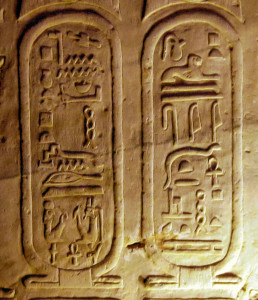
cartouche – A cartouche is an elongated circle with a straight line at its base, and the hieroglyphic names of a pharaoh inside. The word “cartouche” is a French word first applied by Napoleon’s soldiers, because they thought the symbol resembled the gun cartridges. In Egyptian, the word for cartouche was shenu, from the earlier shen sign, which represented a curved rope secured at one end and providing a circle of life/protection. Originally it symbolized the circle of the sun’s path and everything within it, suggesting the universality of the pharaoh’s power. In later periods, it was commonly used as a sign and a guarantee of the gods’ protection of the pharaoh whose name was inscribed within it.
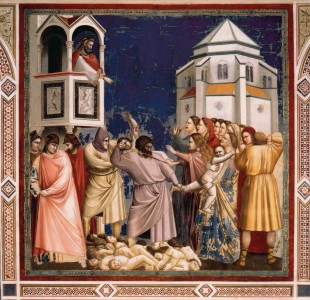
children slaughtered in Bethlehem – The story of the massacre of the innocents comes from the 2nd chapter of the Gospel of Matthew. The wise men who followed the Christmas star went first to Herod the Great to see if he knew where the child would be born. Herod suggested they try Bethlehem because of Old Testament prophecies, and asked them to send news when they had found him. Herod hoped to kill the child, whom he saw as a threat to his power. When the magi failed to notify him of the child’s location, he sent soldiers to Bethlehem to kill every male child under two years of age.
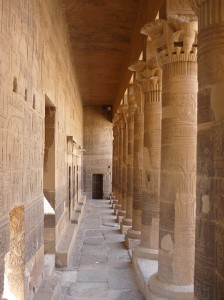
colonnade – At its simplest, a colonnade is a long row of columns connected by layers of molding across the top (the “entablature”). In Egyptian temple architecture the colonnade was usually a single row of columns connected by the ceiling to the main building.
 coney – A word used to translate the ancient Hebrew word which literally means “the hider.” The animal to which this word referred is probably the rock hyrax, a small furry beast living in dry rocky areas and related to the elephant.
coney – A word used to translate the ancient Hebrew word which literally means “the hider.” The animal to which this word referred is probably the rock hyrax, a small furry beast living in dry rocky areas and related to the elephant.

Descender – The actual meaning of the Hebrew word yarden transliterated as “Jordan” River. This is the meaning the people of Israel would have heard when the river’s name was spoken. Scholars have speculated that the name derived from the great distance it travelled in depth, from its springs in the foothills of Mt. Hermon to Jericho and the Dead Sea.
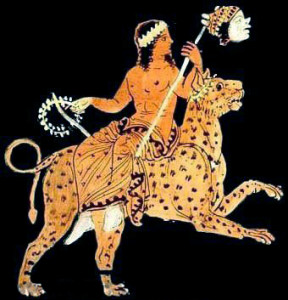 Dionysus – Dionysus (Bacchus to the Romans) was a god of wine and ecstasy, one of the “dying and rising gods” of the ancient world, as well as the god who inspired the theatre arts. His cult was one of many popular mystery religions in the early centuries of the Common Era. Like other vegetative and solar gods, his cyclic death and rebirth offered worshippers hope for their own immortality.
Dionysus – Dionysus (Bacchus to the Romans) was a god of wine and ecstasy, one of the “dying and rising gods” of the ancient world, as well as the god who inspired the theatre arts. His cult was one of many popular mystery religions in the early centuries of the Common Era. Like other vegetative and solar gods, his cyclic death and rebirth offered worshippers hope for their own immortality.
 Dushara – Dushara was the principal male deity worshipped at Rekem/Petra during the last centuries prior to the Common Era into the first several centuries CE. Nabataeans commonly worshipped him alongside Zeus Helios and Dionysus. His female counterpart was probably al-Uzzah.
Dushara – Dushara was the principal male deity worshipped at Rekem/Petra during the last centuries prior to the Common Era into the first several centuries CE. Nabataeans commonly worshipped him alongside Zeus Helios and Dionysus. His female counterpart was probably al-Uzzah.
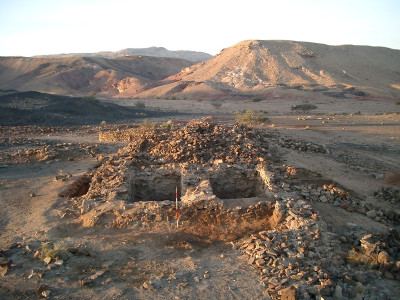 Edom/Edomite – 1st C CE Jews considered the people of Edom to be descendants of the biblical Esau, son of the patriarch Isaac. In its heyday (which lasted for several hundred years during the first half of the 1st millennium BCE) the kingdom of Moab reached from the Dead Sea to the northern tip of the Gulf of Aqaba—the heart of the territory later controlled by the Nabataean empire. For many reasons, the people of Israel had extremely negative feelings about the Edomites, and believed they had been cursed by God. References to this can be found in Old Testament prophecy.
Edom/Edomite – 1st C CE Jews considered the people of Edom to be descendants of the biblical Esau, son of the patriarch Isaac. In its heyday (which lasted for several hundred years during the first half of the 1st millennium BCE) the kingdom of Moab reached from the Dead Sea to the northern tip of the Gulf of Aqaba—the heart of the territory later controlled by the Nabataean empire. For many reasons, the people of Israel had extremely negative feelings about the Edomites, and believed they had been cursed by God. References to this can be found in Old Testament prophecy.
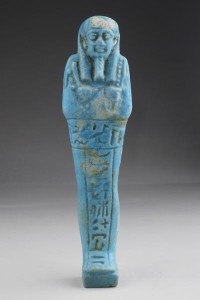
faience – Egyptian faience was a soft mixture of crushed crystal that was cast in molds or modeled into various shapes. The traditional blue or blue-green color of most Egyptian faience was due to the glaze applied to the shapes before firing. Scholars have suggested that faience was the result of attempts to create artificial lapis lazuli and turquoise.
 frankincense – Frankincense is a resinous sap harvested from the Boswelia sacra tree in southern Arabia. Harvesters make cuts in the bark of mature trees to release the sap, which is collected after it hardens. Frankincense was worth more than its weight in gold during the height of the Roman Empire, where it was used extensively in religious and funerary rites, as well as in medicine and pest and odor control. In Egypt frankincense was also used in the embalming process.
frankincense – Frankincense is a resinous sap harvested from the Boswelia sacra tree in southern Arabia. Harvesters make cuts in the bark of mature trees to release the sap, which is collected after it hardens. Frankincense was worth more than its weight in gold during the height of the Roman Empire, where it was used extensively in religious and funerary rites, as well as in medicine and pest and odor control. In Egypt frankincense was also used in the embalming process.

gentile – “Gentile” is derived from the Latin word gentilis, meaning “clan” or “tribe”. It has been used since early Latin translations of Judeo-Christian scriptures to translate the Hebrew word goyim and the Greek word ethnos (both literally, “peoples,” “nations”) when the intent was specifically non-Jewish people or nations. Today the word is used almost exclusively to mean non-Jews.
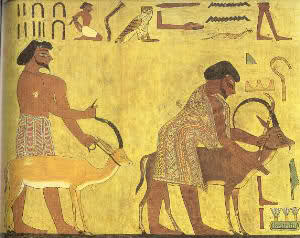 habiru – Habiru/apiru was a term used throughout the Ancient Near East from Sumeria to Egypt, used to describe people on the fringes of society—unsettled wanderers, raiders, mercenaries, slaves, migrant workers, and vagrants. Based primarily on the similarity of the words, some scholars have tried to point to the habiru as the ancestors of the Hebrews, but the connection is tenuous.
habiru – Habiru/apiru was a term used throughout the Ancient Near East from Sumeria to Egypt, used to describe people on the fringes of society—unsettled wanderers, raiders, mercenaries, slaves, migrant workers, and vagrants. Based primarily on the similarity of the words, some scholars have tried to point to the habiru as the ancestors of the Hebrews, but the connection is tenuous.
 hall of columns – The hall of columns, or hypostyle hall, was a common feature of Egyptian temples. Such a room might have a ceiling above the columns, or only stone lintels stabilizing them. The most famous example is the great hypostyle hall at the temple of Karnak, dating from the late 2nd millennium BCE. In Egyptian temples hypostyle halls were usually located between the peristyle, or colonaded courtyard, and the inner sanctuary.
hall of columns – The hall of columns, or hypostyle hall, was a common feature of Egyptian temples. Such a room might have a ceiling above the columns, or only stone lintels stabilizing them. The most famous example is the great hypostyle hall at the temple of Karnak, dating from the late 2nd millennium BCE. In Egyptian temples hypostyle halls were usually located between the peristyle, or colonaded courtyard, and the inner sanctuary.
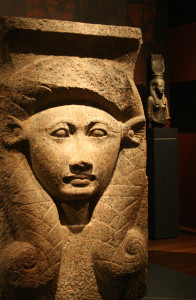
Hathor – Hathor was one of the most important goddesses of ancient Egypt, with roots stretching back into prehistory. She was commonly depicted as a cow goddess or as a woman with a cow’s horns and a uraeus (sacred snake) twined around a sun disc. Like most deities, her significance changed over time, but she always remained a powerful goddess of love, fertility, motherhood, and protection.
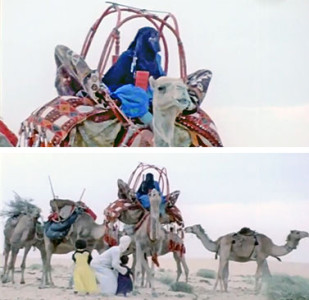 hawdaj – A hawdaj was a tent-like platform, or palanquin, in which women and children rode on camels.
hawdaj – A hawdaj was a tent-like platform, or palanquin, in which women and children rode on camels.
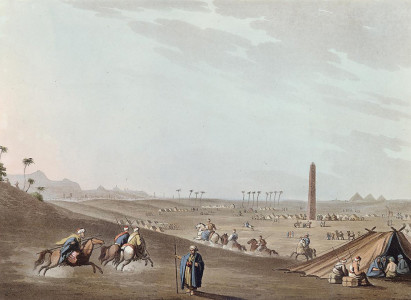
Heliopolis – Heliopolis (“city of the sun” in Greek) was known in Egypt as Iunu, or “pillar,” probably because of the huge number of pillars in its temples. It was already famous for the wisdom of its astronomer priests in the Old Kingdom, a reputation which lasted into the Greco-Roman period. The gods Atum and Ra were its principal gods. The Persians destroyed Heliopolis almost entirely in the 6th C BCE.
 henna – Henna is a temporary dye made from the crushed leaves of the Lawsonia inermis plant, which is indigenous to many parts of Africa, Arabia and southern Asia. Powdered henna is mixed with an acidic liquid like lemon juice or tea, and applied to the skin to create temporary designs. Both skin and hair dyed with henna were common in ancient Egypt and parts of northern Africa and Asia.
henna – Henna is a temporary dye made from the crushed leaves of the Lawsonia inermis plant, which is indigenous to many parts of Africa, Arabia and southern Asia. Powdered henna is mixed with an acidic liquid like lemon juice or tea, and applied to the skin to create temporary designs. Both skin and hair dyed with henna were common in ancient Egypt and parts of northern Africa and Asia.
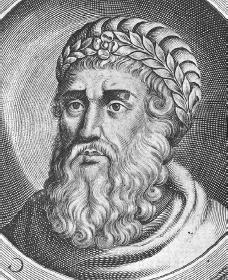 Herod the Great – Herod the Great was the ruler of Judea under the Romans from 37/36 BCE until his death, probably in 4 BCE. The son of an Idumaean father and a Nabataean mother, he converted to Judaism under the Maccabees. Because he was not born a Jew—and because of his cruel and immoral excesses—people often questioned his loyalties. He was king when Jesus was born, and responsible for the slaughter of the innocents at Bethlehem. It was after his death that Joseph was told in a dream that Jesus could return safely from Egypt. Herod undertook a major expansion of the 2nd Temple in Jerusalem and many other ambitious building projects. His sons were also called Herod, which can cause confusion—e.g., Herod Antipas, Herod Archelaus, Herod Phillip, etc.
Herod the Great – Herod the Great was the ruler of Judea under the Romans from 37/36 BCE until his death, probably in 4 BCE. The son of an Idumaean father and a Nabataean mother, he converted to Judaism under the Maccabees. Because he was not born a Jew—and because of his cruel and immoral excesses—people often questioned his loyalties. He was king when Jesus was born, and responsible for the slaughter of the innocents at Bethlehem. It was after his death that Joseph was told in a dream that Jesus could return safely from Egypt. Herod undertook a major expansion of the 2nd Temple in Jerusalem and many other ambitious building projects. His sons were also called Herod, which can cause confusion—e.g., Herod Antipas, Herod Archelaus, Herod Phillip, etc.
Herod Antipas – See Antipas

hippopotamus – The bull hippopotamus was a serious threat to people living along the Nile in ancient Egypt. Its unpredictable behavior and frequent rages resulted in many human injuries and deaths. Although the female hippo was associated with the fertility goddess Taweret, the bull hippo was associated primarily with the god Set, a force of chaos.
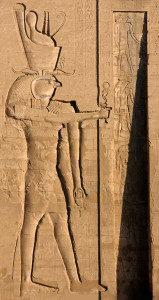
Horus – Horus is one of the most significant of Egyptian gods, a sky and sun god usually depicted as a falcon or a man with a falcon’s head. Sometime during the late Old Kingdom the Isis-Osiris-Horus myth grew in significance, with Horus becoming identified with Egypt’s living king. This myth put Set in opposition to Horus, perhaps symbolizing the necessarily bi-polar qualities of kingship. As Isis-worship spread across the ancient world, Horus, as her divine son, became more prominent as well.
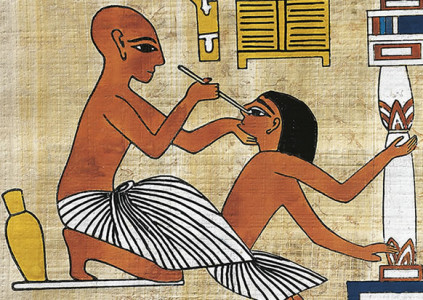 House of Life – House of Life was the name given to the part of an Egyptian temple where the scrolls preserving wisdom, medicine, rituals, and history of various kinds were kept. Priests trained as scribes and healers worked in these precincts.
House of Life – House of Life was the name given to the part of an Egyptian temple where the scrolls preserving wisdom, medicine, rituals, and history of various kinds were kept. Priests trained as scribes and healers worked in these precincts.
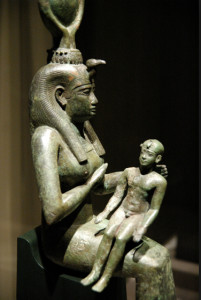
Isis – The Egyptian goddess Isis was the daughter of Earth (Geb) and Sky (Nut), wife of her brother Osiris, and mother of Horus. As protector of the dead, healer of all infirmities, loving wife, and nurturing mother, she grew in popularity until her cult spread across the Roman Empire. The story of her long search for her husband Osiris (killed by his brother Set), the miraculous conception of her son Horus, and the benevolent rule of their divine triad became the substance of much of Egyptian religion, and is at the heart of Isis’ mysteries.
 Jewish settlements, attacks on – Historians have theorized that antisemitism had its roots in the 3rd C BCE book Aegyptiaca, written by a priest of Ra from Heliopolis named Manetho. He wrote his history of Egypt, including an anti-Jewish retelling of the Exodus, at about the time the Septuagint (the Greek translation of the Hebrew scriptures) was being published. From what scholars can tell, anti-Jewish bias developed wherever Manethos’ scurrilous account became known, eventually resulting in a large-scale pogrom in Alexandria in 36 CE.
Jewish settlements, attacks on – Historians have theorized that antisemitism had its roots in the 3rd C BCE book Aegyptiaca, written by a priest of Ra from Heliopolis named Manetho. He wrote his history of Egypt, including an anti-Jewish retelling of the Exodus, at about the time the Septuagint (the Greek translation of the Hebrew scriptures) was being published. From what scholars can tell, anti-Jewish bias developed wherever Manethos’ scurrilous account became known, eventually resulting in a large-scale pogrom in Alexandria in 36 CE.
Jewish temple in Egypt –Jews settled in Egypt long before the Exodus, and many remained there afterwards. During Israel’s struggles with Antiochus Epiphanes in the 2nd C BCE, apparently Onias, the son of Israel’s high priest, was sent to live in Egypt for his safety, where he received land from Ptolemy VI for the building of a Jewish temple in Egypt. This land had previously been the site of a temple of Bast, destroyed in the Persian invasion of Egypt. The exact location of Onias’ temple, which was built with mud bricks, is uncertain, but many scholars believe it was at Leontopolis, near Heliopolis.

 Joseph’s dreams – The opening chapters of Matthew’s Gospel record three dreams sent to Joseph from God. The first told him not to fear for Mary’s chastity, but to marry her as he had planned. The second warned him to leave Bethlehem and flee to Egypt because of Herod’s plan to kill the child Jesus. The third dream came to him in Egypt after Herod’s death, telling him it was safe to return to Israel.
Joseph’s dreams – The opening chapters of Matthew’s Gospel record three dreams sent to Joseph from God. The first told him not to fear for Mary’s chastity, but to marry her as he had planned. The second warned him to leave Bethlehem and flee to Egypt because of Herod’s plan to kill the child Jesus. The third dream came to him in Egypt after Herod’s death, telling him it was safe to return to Israel.
 King’s Highway – The King’s Highway was an ancient caravan route that stretched from Egypt across Sinai to the Gulf of Aqaba and from there up along the eastern side of the Dead Sea and the Jordan River to Damascus and Mesopotamia. The route was already in existence during Israel’s earliest years.
King’s Highway – The King’s Highway was an ancient caravan route that stretched from Egypt across Sinai to the Gulf of Aqaba and from there up along the eastern side of the Dead Sea and the Jordan River to Damascus and Mesopotamia. The route was already in existence during Israel’s earliest years.
kohen – Kohen is the Hebrew word for priest.
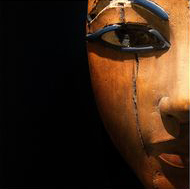 kohl – Kohl was a popular cosmetic in ancient Egypt and in many other Mediterranean cultures, often used as a black eyeliner. In most cases it was a lead paste or liquid.
kohl – Kohl was a popular cosmetic in ancient Egypt and in many other Mediterranean cultures, often used as a black eyeliner. In most cases it was a lead paste or liquid.
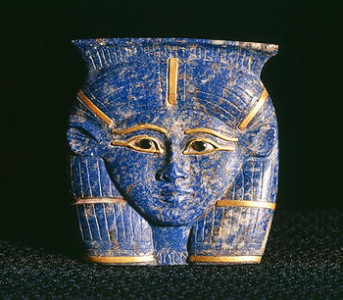
lapis lazuli – Lapis lazuli is a semi-precious stone highly valued by ancient Egyptians because of its deep blue color. It was mined principally in what is now Afghanistan, and exported to many ancient Mediterranean cultures from as early as 7000 BCE. Egyptians used it for amulets, jewelry, and inlays in statuary.
 Leontopolis – Leontopolis was a city in the administrative district (nome) of Heliopolis in ancient Egypt. According to the historian Josephus, as well as documents discovered in Egypt, it was the site of the Jewish town and temple built in the 2nd C BCE, sometimes referred to as the Mound of the Jew, or the Land of Onias.
Leontopolis – Leontopolis was a city in the administrative district (nome) of Heliopolis in ancient Egypt. According to the historian Josephus, as well as documents discovered in Egypt, it was the site of the Jewish town and temple built in the 2nd C BCE, sometimes referred to as the Mound of the Jew, or the Land of Onias.
 magi – Magi (as the word is used here) were men of the ancient world reputed to have great wisdom concerning the stars, and able to read the future from their movements. It is the word used in the Gospel of Matthew to describe the men who came from the East following Jesus’ birth star.
magi – Magi (as the word is used here) were men of the ancient world reputed to have great wisdom concerning the stars, and able to read the future from their movements. It is the word used in the Gospel of Matthew to describe the men who came from the East following Jesus’ birth star.
 mortuary priest – Mortuary priests were the most numerous of Egyptian priests. They oversaw the embalming and burial of the dead, together with all the accompanying rituals. Wealthy Egyptians paid to have mortuary priests continue to perform temple rites in their memory long after their deaths. Temples were endowed in perpetuity for the continuing rites of pharaohs. Scholars believe that senior sem priests may have functioned much like shamans, journeying into the netherworld and returning with the wisdom of the gods.
mortuary priest – Mortuary priests were the most numerous of Egyptian priests. They oversaw the embalming and burial of the dead, together with all the accompanying rituals. Wealthy Egyptians paid to have mortuary priests continue to perform temple rites in their memory long after their deaths. Temples were endowed in perpetuity for the continuing rites of pharaohs. Scholars believe that senior sem priests may have functioned much like shamans, journeying into the netherworld and returning with the wisdom of the gods.
 myrrh – Like frankincense, myrrh is a resinous sap, highly valued in the ancient world. It was harvested from Commiphora trees in southern Arabia and other African and Mediterranean areas. As with frankincense, harvesters made cuts in the bark of mature trees to release the sap, and collected it after it hardened. Myrrh was widely used as a perfume, medicine, and incense, and in Egypt as an ingredient in the embalming process.
myrrh – Like frankincense, myrrh is a resinous sap, highly valued in the ancient world. It was harvested from Commiphora trees in southern Arabia and other African and Mediterranean areas. As with frankincense, harvesters made cuts in the bark of mature trees to release the sap, and collected it after it hardened. Myrrh was widely used as a perfume, medicine, and incense, and in Egypt as an ingredient in the embalming process.
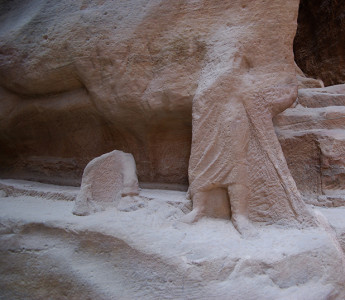
Nabataeans – The origin of the ancient Nabataeans is unclear. They were an Arab people who first appeared in history as nomads on the edges of the lands once known as Moab and Edom. In a few hundred years they became a nation of wealthy settled merchants who controlled the lucrative caravan routes between southern Arabia, Syria, and Egypt. Their culture was at its height during the last couple of centuries BCE and first two centuries CE. Today they are remembered best for their capital city of Petra in Jordan.
 natron – Natron is a combination of minerals found in dry lake beds and used for mummification in ancient Egypt. It was composed of soda ash, sodium bicarbonate, sodium sulfate, and sodium chloride—in everyday terms, a type of salt, similar to early detergents. After internal organs (except for the heart) were removed, the body was cleaned with spiced palm oil and packed repeatedly with natron to remove moisture and prevent decomposition. The internal organs were also dried with natron and either sealed in canopic jars or wrapped and returned to the body cavity. The body was then wrapped in layers of linen strips and sealed with resin to keep moisture from entering.
natron – Natron is a combination of minerals found in dry lake beds and used for mummification in ancient Egypt. It was composed of soda ash, sodium bicarbonate, sodium sulfate, and sodium chloride—in everyday terms, a type of salt, similar to early detergents. After internal organs (except for the heart) were removed, the body was cleaned with spiced palm oil and packed repeatedly with natron to remove moisture and prevent decomposition. The internal organs were also dried with natron and either sealed in canopic jars or wrapped and returned to the body cavity. The body was then wrapped in layers of linen strips and sealed with resin to keep moisture from entering.
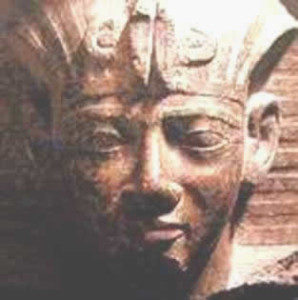 Nectanebo – Pharaoh Nectanebo II, or Nekhthorheb, reigned in the mid 4th century BCE as the last native Egyptian pharaoh before Egypt’s conquest by the Greeks. The religious art he encouraged during his reign set the style for much of the Greek Ptolemaic building. He is believed to be the pharaoh responsible for repairing the temple of Bubastis and building the inner sanctuary known as the Hall of Nectanebo.
Nectanebo – Pharaoh Nectanebo II, or Nekhthorheb, reigned in the mid 4th century BCE as the last native Egyptian pharaoh before Egypt’s conquest by the Greeks. The religious art he encouraged during his reign set the style for much of the Greek Ptolemaic building. He is believed to be the pharaoh responsible for repairing the temple of Bubastis and building the inner sanctuary known as the Hall of Nectanebo.
![]() nome – “Nome” was a Greek word for the Egyptian administrative districts that had existed since the 4th millennium BCE. The Greek term replaced the original Egyptian sepat during the Greek Ptolemaic period. In Lower Egypt, or the area north of Memphis, there were 20 nomes, among them Bubastis and Heliopolis. Under Roman rule, each nome had its own governor, or strategos, but their military power had been stripped, leaving them with only civil authority. Each nome was personified by its ruling local god (right). Bast was the ruling god of the nome of Bubastis.
nome – “Nome” was a Greek word for the Egyptian administrative districts that had existed since the 4th millennium BCE. The Greek term replaced the original Egyptian sepat during the Greek Ptolemaic period. In Lower Egypt, or the area north of Memphis, there were 20 nomes, among them Bubastis and Heliopolis. Under Roman rule, each nome had its own governor, or strategos, but their military power had been stripped, leaving them with only civil authority. Each nome was personified by its ruling local god (right). Bast was the ruling god of the nome of Bubastis.

oracle – An oracle could be either a being who spoke with the word of a god, or the words spoken. Bast/Bastet was considered a powerful source of divine oracles. The Apis bull was renowned in ancient Egypt as a source of oracular pronouncements, since he was considered to be the ba of the god Apis. In A Cat Out of Egypt, the Cat Who Is Bast is portrayed as such a source of oracles, which she delivered through Tikos from her window of appearance. There is no historic evidence that such a Great Cat resided at Bubastis.
 Osiris – Osiris was one of the great gods of ancient Egypt, eldest son of Earth (Geb), brother and husband of Isis, and father of Horus. From Egypt’s earliest days he was considered to be a god of the dead, and eventually became the ruling god of the afterlife. His rebirth and miraculous fathering of son Horus offered his worshippers hope of life after death. With Isis and Horus, he was part of one of Egypt’s most powerful divine triads.
Osiris – Osiris was one of the great gods of ancient Egypt, eldest son of Earth (Geb), brother and husband of Isis, and father of Horus. From Egypt’s earliest days he was considered to be a god of the dead, and eventually became the ruling god of the afterlife. His rebirth and miraculous fathering of son Horus offered his worshippers hope of life after death. With Isis and Horus, he was part of one of Egypt’s most powerful divine triads.
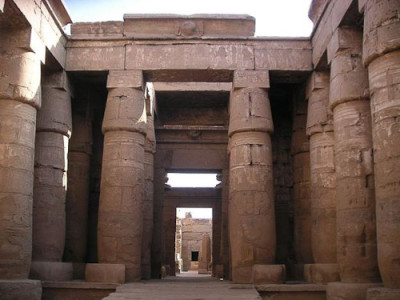
peristyle – Peristyle is a word borrowed from Greek and Roman architecture and applied to a feature in Egyptian temples: a colonnade inside a walled building surrounding an open courtyard.
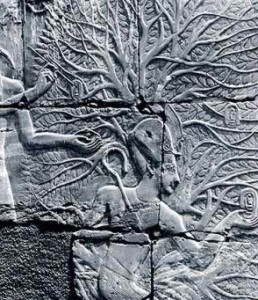
persea blossoms – The persea tree (Mimusops schimperi) is a small evergreen related to the laurel. Its blossoms are known for their sweetness and were commonly part of Egyptian funeral wreaths. Persea fruit was sacred to a number of gods and goddesses. The persea tree was one of several Egyptian trees referred to as the tree of life in various myths. Some variations of the myth of Osiris say that his coffin was caught in the branches of a persea tree, which grew around and eventually enclosed it; others say it was the tamarisk or sycamore tree.
 pipit – This is a red-throated pipit (Anthus cervinus), a small brown insect-eating bird common to the open spaces of southern Europe and central Asia.
pipit – This is a red-throated pipit (Anthus cervinus), a small brown insect-eating bird common to the open spaces of southern Europe and central Asia.
pure ones – The pure ones were a lower rank of temple priests responsible for a variety of practical chores, such as the preparation of food. Some texts suggest that they were also young priests in training.
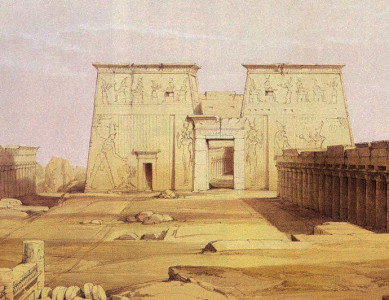
pylon – A pylon was a monumental stone gate at the entrance to an Egyptian temple, consisting of two sloping towers rising on each side of a lower connecting entryway. The towers were carved with images of the gods and pharaohs, and topped by a cornice.
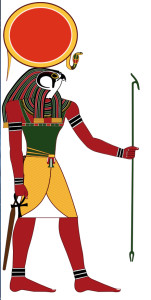 Ra – Ra was a sun god worshiped in parts of ancient Egypt from its earliest days as the father of creation and all the gods. He drove the chariot of the sun across the sky by day and through the underworld by night. As “Eye of Ra,” Bast/Bastet protected him in his journey and fought the demon Apophis who sought to prevent his chariot from rising into the dawn sky.
Ra – Ra was a sun god worshiped in parts of ancient Egypt from its earliest days as the father of creation and all the gods. He drove the chariot of the sun across the sky by day and through the underworld by night. As “Eye of Ra,” Bast/Bastet protected him in his journey and fought the demon Apophis who sought to prevent his chariot from rising into the dawn sky.
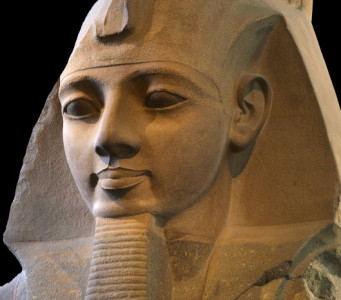 Ramesses II – Ramesses II, or Ramesses the Great, was probably the greatest pharaoh in Egypt’s history. He reigned for 60 years during the 13th C BCE, securing Egypt’s borders and expanding its influence, building a series of impressive monuments, and adding his own name to many monuments he had not built. He established a capital in the delta at ancient Avaris, the site of the god Set’s temple. He was more influential than any other pharaoh in destroying the monotheistic legacy of Akhenaten. He is a favorite choice for the pharaoh of the Exodus. Archaeologists believe his seated statue once stood in the entrance hall at Bubastis.
Ramesses II – Ramesses II, or Ramesses the Great, was probably the greatest pharaoh in Egypt’s history. He reigned for 60 years during the 13th C BCE, securing Egypt’s borders and expanding its influence, building a series of impressive monuments, and adding his own name to many monuments he had not built. He established a capital in the delta at ancient Avaris, the site of the god Set’s temple. He was more influential than any other pharaoh in destroying the monotheistic legacy of Akhenaten. He is a favorite choice for the pharaoh of the Exodus. Archaeologists believe his seated statue once stood in the entrance hall at Bubastis.
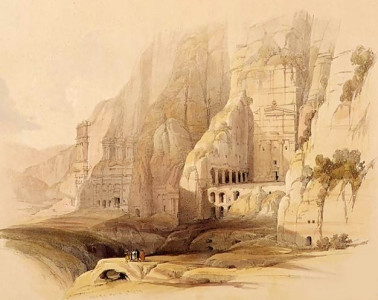 Rekem – Rekem was the name of the Nabataeans’ capital city during Yeshua’s lifetime. Today we know it as Petra. Like the Nabataeans themselves, it appeared in history almost out of nowhere. Apparently it had been a place of refuge for the Nabataeans during the years of their transition from a nomadic to a settled lifestyle. Today it is famous for its rock-cut tombs and dwellings, although most of the city was destroyed by centuries of earthquakes and overbuilding.
Rekem – Rekem was the name of the Nabataeans’ capital city during Yeshua’s lifetime. Today we know it as Petra. Like the Nabataeans themselves, it appeared in history almost out of nowhere. Apparently it had been a place of refuge for the Nabataeans during the years of their transition from a nomadic to a settled lifestyle. Today it is famous for its rock-cut tombs and dwellings, although most of the city was destroyed by centuries of earthquakes and overbuilding.

sacred scarab beetle – The Scarabeus sacer, or sacred dung beetle, has played a prominent part in Egyptian myths and rituals since the Old Kingdom. The beetle’s practice of shaping a ball of dung and rolling it along the ground resembled the activity of an early sun god, Khepri, who rolled the sun across the sky each day and through the underworld at night. For this and other reasons, the scarab beetle came to symbolize transformation, renewal, and resurrection, and was commonly used as an amulet. Embalmers routinely placed a stone heart scarab upon the heart of a deceased person to ensure that the heart did not betray the person at judgment.
 sem priest – A sem priest was a senior mortuary priest who performed rituals for the dead. There is some evidence that a mortuary sem priest functioned much like a shaman, journeying into the netherworld and returning with the wisdom of the gods.
sem priest – A sem priest was a senior mortuary priest who performed rituals for the dead. There is some evidence that a mortuary sem priest functioned much like a shaman, journeying into the netherworld and returning with the wisdom of the gods.
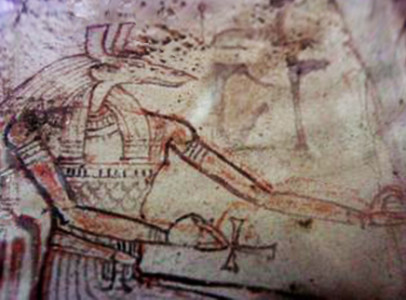 Set – Set, or Seth, was the brother and murderer of Osiris. Egyptian myths pictured him in continual conflict with his nephew Horus, Osiris’ son. Set was the ruler of the red lands, or desert, as opposed to Horus’ rule of the black (cultivated) lands. He was widely worshipped until the Late Period, when a series of foreign conquests of Egypt made Set (“the god of foreigners”) increasingly unpopular. Eventually myths consigned him to exile in the red desert as a demon of chaos.
Set – Set, or Seth, was the brother and murderer of Osiris. Egyptian myths pictured him in continual conflict with his nephew Horus, Osiris’ son. Set was the ruler of the red lands, or desert, as opposed to Horus’ rule of the black (cultivated) lands. He was widely worshipped until the Late Period, when a series of foreign conquests of Egypt made Set (“the god of foreigners”) increasingly unpopular. Eventually myths consigned him to exile in the red desert as a demon of chaos.
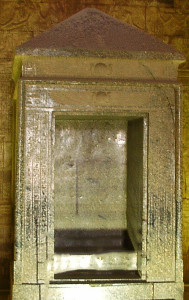
shrine of the goddess – The shrine, or naos, was the “house” of the goddess or god, found in every Egyptian temple. Fragments of Bast/Bastet’s naos have been recovered in excavations at Bubastis. This naos was carved from a single block of granite and stood 11½ feet in height, topped by a pitched roof with a carved frieze of uraei (sacred snakes) crowned with sun discs. Steps approached the front, where gilded wooden doors opened inward to reveal an ornate cult statue of Bast/Bastet. Based on the naos’ interior dimensions, the statue would have been less than four feet in height. She would have been made of gold and other precious metals, as well as precious and semi-precious stones.
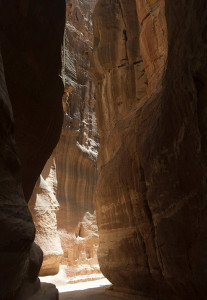 siq – The siq, or al-Siq (Arabic for “shaft”), is the name of the narrow canyon that winds for nearly a mile into the city of Rekem/Petra. At many points the siq is less than ten feet wide
siq – The siq, or al-Siq (Arabic for “shaft”), is the name of the narrow canyon that winds for nearly a mile into the city of Rekem/Petra. At many points the siq is less than ten feet wide
stadia – Stadia are ancient Greek units of measure that were in common use in Roman times. One stadion is 600 feet. One mile is approximately 8.69 stadia.
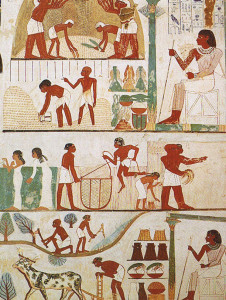 strategos – The strategos was the governor, or chief administrative officer, of an ancient Egyptian nome, or administrative district. During the Roman Period they had no military power.
strategos – The strategos was the governor, or chief administrative officer, of an ancient Egyptian nome, or administrative district. During the Roman Period they had no military power.
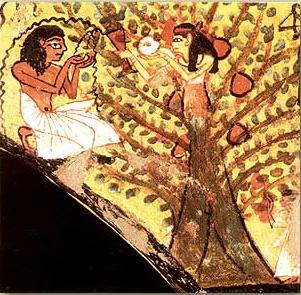 sycamore fig tree – The sycamore fig tree (ficus sycamorus) was the tallest tree indigenous to Egypt, growing as high as sixty feet. Its fruit was edible, but only if each fig was slashed several days before harvesting. The sycamore fig appears in a number of Egyptian myths, and was sacred to the goddesses Nut, Hathor and Isis, and the god Ra.
sycamore fig tree – The sycamore fig tree (ficus sycamorus) was the tallest tree indigenous to Egypt, growing as high as sixty feet. Its fruit was edible, but only if each fig was slashed several days before harvesting. The sycamore fig appears in a number of Egyptian myths, and was sacred to the goddesses Nut, Hathor and Isis, and the god Ra.
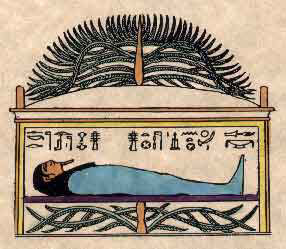
tamarisk tree – The tamarisk, or saltcedar, (tamarix), is a small tree with feathery leaves, indigenous to the Mediterranean basin and much of Asia. It can grow in arid areas wherever small amounts of water are present. As its name suggests, it has a high tolerance for saline soil, since its leaves are able to excrete excess salt. In some versions of the Isis/Osiris myth, it was a tamarisk tree that grew up around Osiris’ coffin.

uraei/uraeus – The uraeus (pl. uraei) is an ancient Egyptian image of an upright snake, usually a cobra. From the earliest years of Egypt’s dynasties, it was part of the pharaoh’s crown. The uraeus represents the cobra goddess Wadjet, protector of Lower Egypt (the delta region). The white vulture of Nekhbet, protector of Upper Egypt, later joined the uraeus on the crown. Together they conveyed authority on the pharaoh. A number of goddesses associated with Wadjet are also depicted with the uraeus crown, as are both Horus and Set.
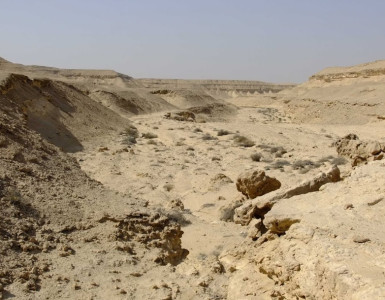 wadi – A wadi, in many Arabic-speaking areas, is a valley, or seasonal watercourse, usually in a desert area prone to flash floods. It might also be translated by the English words canyon, gully, and gulch.
wadi – A wadi, in many Arabic-speaking areas, is a valley, or seasonal watercourse, usually in a desert area prone to flash floods. It might also be translated by the English words canyon, gully, and gulch.
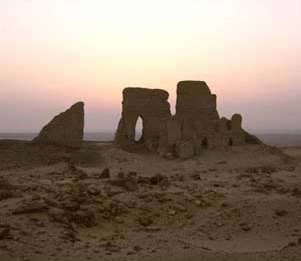 Way of the Philistines – The Way of the Philistines was an ancient trade route connecting Egypt with Damascus, by way of the Mediterranean coastline and the River Jordan. At Damascus it joined the King’s Highway, where travellers could continue on to Mesopotamia and Anatolia. In the early Christian era it was renamed the Via Maris, or the Way of the Sea, a name taken from references in the biblical book of Isaiah.
Way of the Philistines – The Way of the Philistines was an ancient trade route connecting Egypt with Damascus, by way of the Mediterranean coastline and the River Jordan. At Damascus it joined the King’s Highway, where travellers could continue on to Mesopotamia and Anatolia. In the early Christian era it was renamed the Via Maris, or the Way of the Sea, a name taken from references in the biblical book of Isaiah.
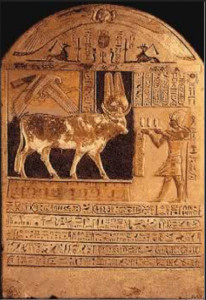 window of appearance – The window of appearance is a place within the precincts of an Egyptian temple where an animal carrying the ba of a god or goddess, such as a bull of Apis (right), or some other representative of deity, appeared before the people/priests to deliver oracles.
window of appearance – The window of appearance is a place within the precincts of an Egyptian temple where an animal carrying the ba of a god or goddess, such as a bull of Apis (right), or some other representative of deity, appeared before the people/priests to deliver oracles.
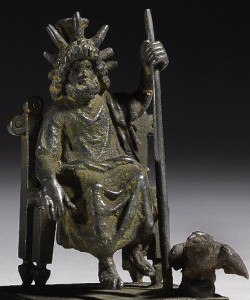 Zeus Helios – Zeus Helios was a deity worshiped by syncretistic Near Eastern groups who combined the great father god of ancient Greece with solar deities of their own lands, borrowing the Greek names Helios and Zeus.
Zeus Helios – Zeus Helios was a deity worshiped by syncretistic Near Eastern groups who combined the great father god of ancient Greece with solar deities of their own lands, borrowing the Greek names Helios and Zeus.


